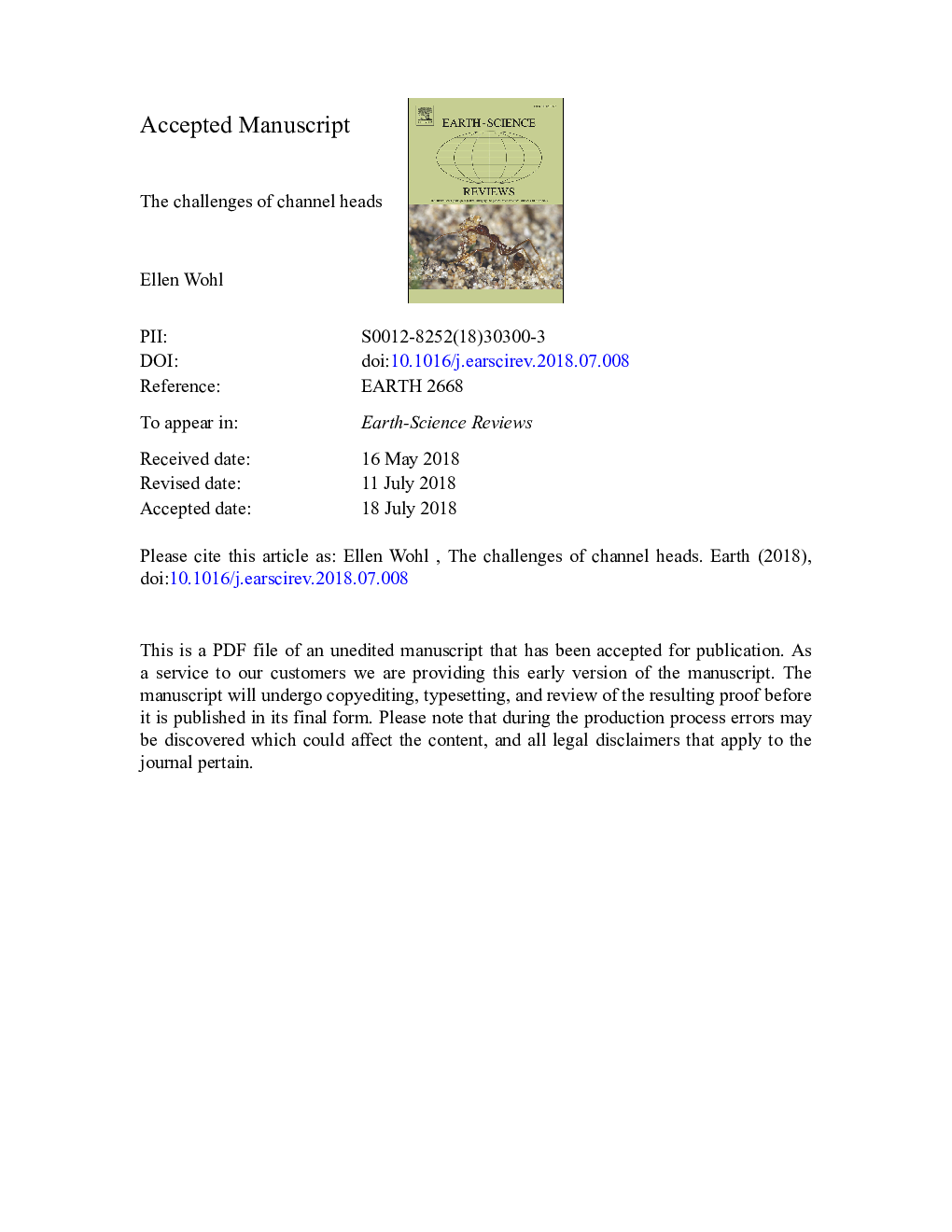| کد مقاله | کد نشریه | سال انتشار | مقاله انگلیسی | نسخه تمام متن |
|---|---|---|---|---|
| 8912899 | 1639918 | 2018 | 64 صفحه PDF | دانلود رایگان |
عنوان انگلیسی مقاله ISI
The challenges of channel heads
ترجمه فارسی عنوان
چالش های کانال سر
دانلود مقاله + سفارش ترجمه
دانلود مقاله ISI انگلیسی
رایگان برای ایرانیان
موضوعات مرتبط
مهندسی و علوم پایه
علوم زمین و سیارات
زمین شناسی
چکیده انگلیسی
A channel head is the upstream-most point of concentrated water flow and sediment transport between definable banks with a longitudinally continuous channel downstream. A channel head can be a relatively diffuse feature, the identification of which is subjective, or a very discrete and prominent break in the surface associated with a headcut. As the formal start of the channel network, channel heads reflect the location of process thresholds and thus differentiate geomorphic process domains for water, solute, and sediment fluxes. Stream order derives from mapped channel networks and the accuracy of stream ordering thus depends on the accuracy of identifying channel heads and associated first-order streams. In the absence of mapped channel heads, remote methods that under- or over-estimate the contributing area necessary to form a channel head can significantly over- or under-estimate, respectively, the extent of first-order streams and erroneously estimate drainage density. This paper reviews the current state of knowledge of the processes that form channel heads, the influences on channel head stability, and the methods used to identify the location of channel heads within a landscape unit. Individual channel heads can result from distinctly different processes, including surface fluvial erosion, surface colluvial erosion, subsurface erosion, or the intersection of subsurface preferential flow with the surface. The location of any channel head over a period of years to decades and longer is best understood as an average location that can and does change through time. The magnitude of change in the location of a channel head over time periods of years to decades will reflect the disturbance regime of the hillslope and the speed with which hillslope-channel processes recover following disturbance. If channel heads form where overland flow exerts a boundary shear stress that exceeds the critical value for substrate erosion, the channel initiation threshold, C, can be expressed as the product of contributing catchment area, A, and hillslope gradient, S: ASαâ¯â¥â¯C. An inverse relation between source area A and local slope S is present to a greater or lesser degree across diverse regions. Substantial variability in values of A and S reflects the influence of factors such as vegetation, slope aspect, surface versus subsurface flow paths, and substrate grain size. Analyses of published data suggest that channel head locations can be predicted with reasonable accuracy where surface runoff dominates channel initiation. Subsurface processes strongly influence the locations of many channel heads, however, and the area-slope relations for these channel heads are much less consistent and predictable. The challenges of channel heads are three-fold for any given drainage basin or portion of a drainage basin: to identify their geographic location, to predict their geographic location, and to determine the relative importance of potential control variables on the multiple processes that can create channel heads. In order to effectively address these challenges, additional research is needed to predict the regional characteristics likely to result in channel heads created by predominantly surface versus subsurface flow; develop envelope curves of A-S relations for different regions; compare channel head locations predicted based on hillslope curvature versus actual channel head locations; evaluate the spatial consistency of channel heads through time; and develop A-S relations for channel heads in little studied regions, including arid and hyperarid environments, karst and permafrost terrains, and grassland and savanna environments.
ناشر
Database: Elsevier - ScienceDirect (ساینس دایرکت)
Journal: Earth-Science Reviews - Volume 185, October 2018, Pages 649-664
Journal: Earth-Science Reviews - Volume 185, October 2018, Pages 649-664
نویسندگان
Ellen Wohl,
